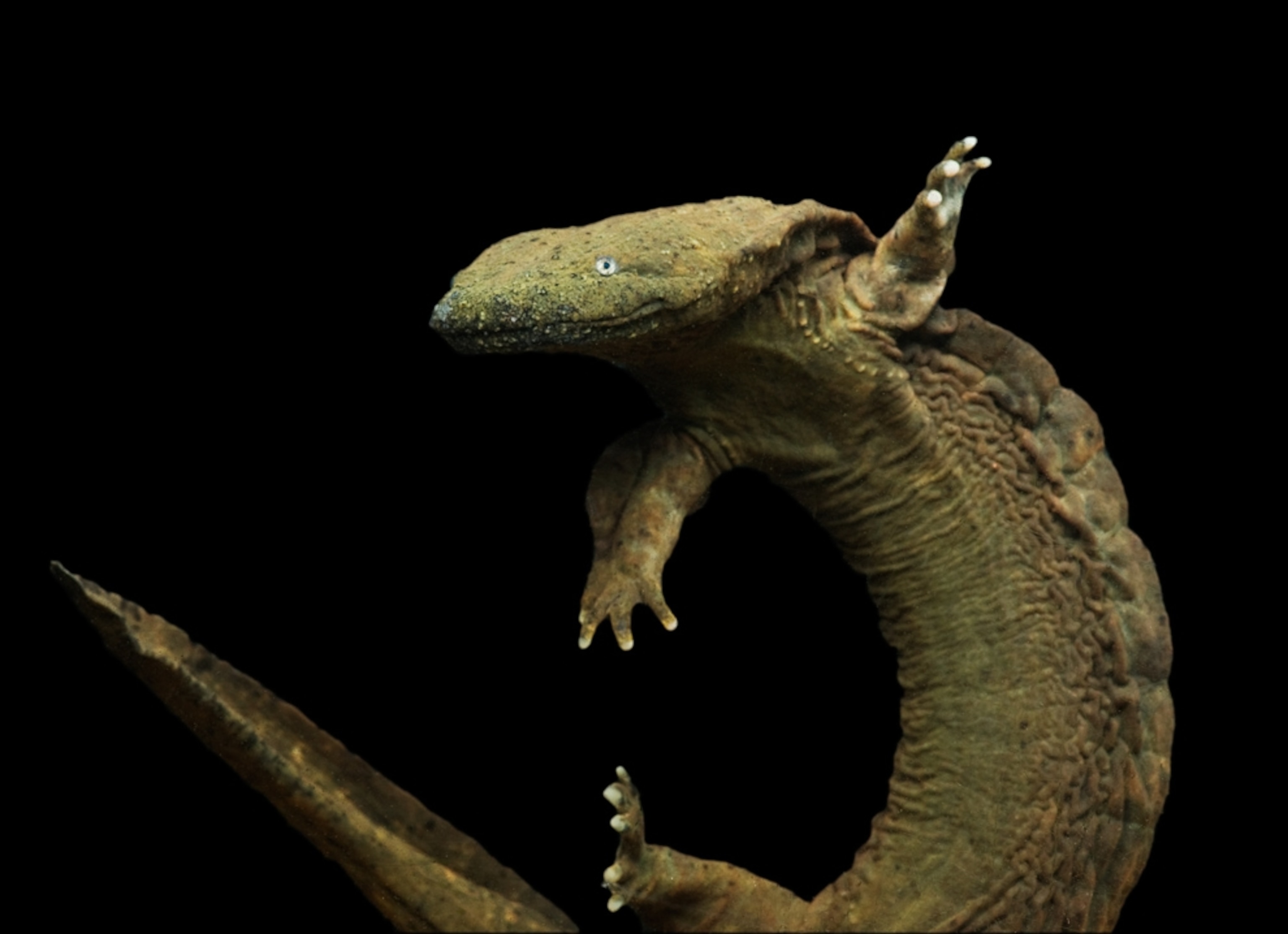
"Snot Otter" Sperm to Save Giant Salamander?
Cryopreservation may be the last chance for the hellbender, aka the snot otter.
It may be a shot in the dark, but freezing sperm is one of the last chances to save the hellbender, North America's biggest salamander, conservationists say.
Hellbenders—also known as snot otters and devil dogs—have dwindled throughout their range, which once encompassed streams from northeastern Arkansas to New York.
The 2.5-foot-long (0.7-meter-long) amphibians have declined by 80 to 90 percent in most of their traditional watersheds in recent decades, and healthy populations now haunt only isolated pockets of southern Appalachia (see map) and Pennsylvania, said Dale McGinnity, curator of reptiles at Nashville Zoo.
All of the states in the hellbender's range have protected the species, and the U.S. Fish and Wildlife Service is currently reviewing whether to give the hellbender federal protection, McGinnity said.
The reasons for their decline is unknown, but it's likely environmental contaminants such as pesticides are harming the creatures via their highly permeable skin, he said.
To make matters worse, hellbenders don't seem to be breeding much in the wild, he said, possibly because human-made pollutants containing synthetic hormones are damaging the amphibians' reproductive systems. Pollutants may also be harming the species' eggs or larvae.
As a result, there are apparently very few wild hellbenders in existence, leaving mostly aged individuals—the amphibians live at least 30 years and could live much longer.
(See photos of vanishing amphibians in National Geographic magazine.)
The hellbender's decline spurred an international team to collect sperm from some captive salamanders in September 2009 for cryopreservation, a common zoo practice that freezes sperm without damaging its cell membranes.
Though several zoos have put a "great deal of effort" into breeding the amphibians in captivity, none has been particularly successful, McGinnity added. It's unclear why they're tough to breed.
"For the first time, sperm was collected from a living salamander, cryopreserved, and brought back to life," said McGinnity, who is involved in the sperm-preservation effort with colleagues from Belgium's Antwerp Zoo and Michigan State University.
A sort of "insurance policy" against extinction, the sperm will enable scientists to manage hellbender breeding, according to team member Dalen Agnew, a reproductive pathologist at Michigan State University.
For instance, scientists can use the stored sperm to crossbreed individuals, he said, to ensure that wild hellbenders are genetically diverse, he said. Genetic diversity is important because if closely related salamanders breed, their inbred offspring will be weaker and more susceptible to disease.
(See "Human Sperm Gene Traced to Dawn of Animal Evolution.")
Sperm-Filled Salamanders
Despite their hellish monikers, the "big, flaccid creatures" are actually "very mellow," Agnew said.
This docile nature certainly helps scientists collect salamander sperm, which is "milked" out of a hellbender by rubbing it between the front legs and tail, said Nashville Zoo's McGinnity.
(Watch a National Geographic Channel video of herpetologist Brady Barr "kissing" a hellbender.)
Agnew also found that the hellbender sperm cell—like those of other amphibian species—boasts a ribbon of tissue encircling the tail. Magnified 40 times, it "almost looks like a corkscrew spinning," Agnew said.
The winding tissue likely adds a jolt of horsepower to the sperm cell, he said. (Related: "Sperm Recognize 'Brothers,' Team Up for Speed.")
So far Agnew and colleagues—including Nashville Zoo's Sally Nofs and Michael Kirk and Antwerp Zoo's Robert Browne—used a unique "recipe" of preservation ingredients to keep hellbender sperm viable for six months—ideally, the sperm could be stored for hundreds of years.
Snot Otters Unchanged Since Dinosaur Days
Hellbenders haven't changed much since dinosaurs ruled the world, which puts the amphibians in nearly a class of their own, Nashville Zoo's McGinnity noted.
There are only two species related to the hellbender: the Chinese giant salamander (picture) and the Japanese giant salamander, which are also in decline. (Read about a new giant-salamander breeding center that opened in July in Washington, D.C.)
"If we lose them, we lose a lot of evolutionary history, as this group is unique and unlike anything else."





